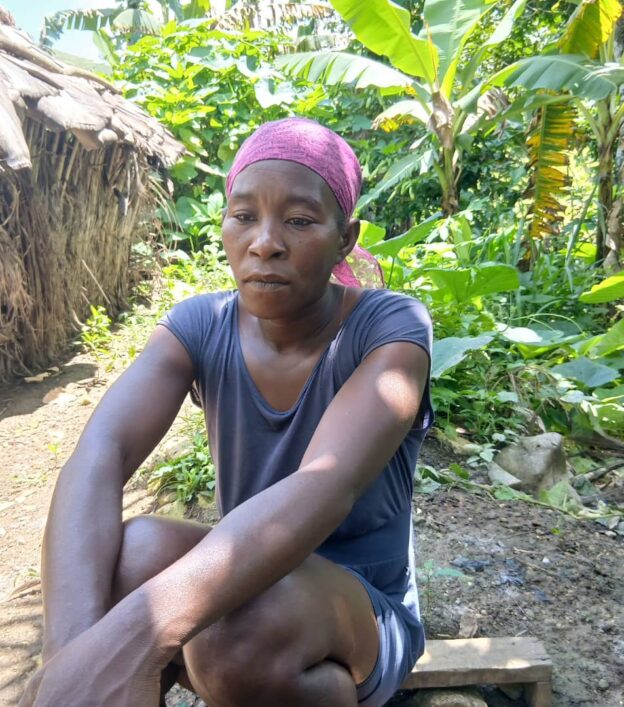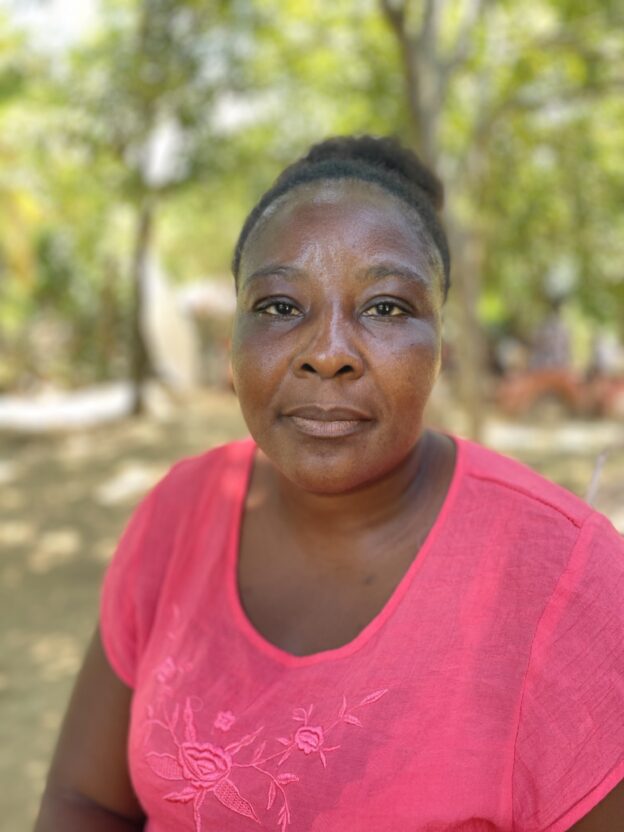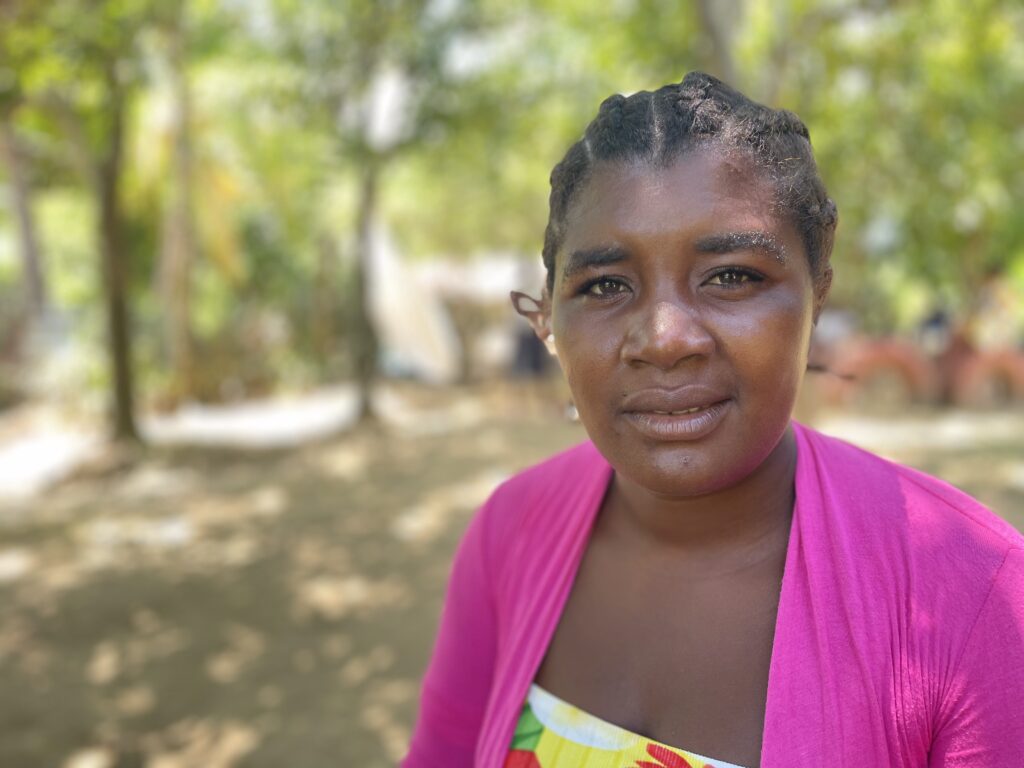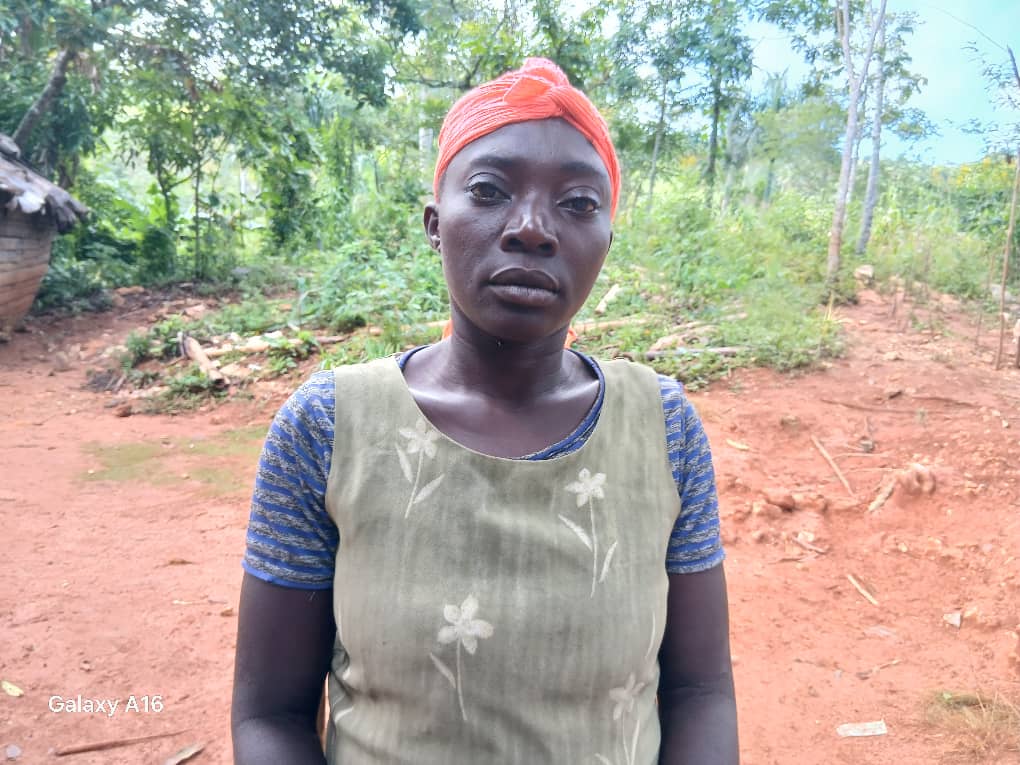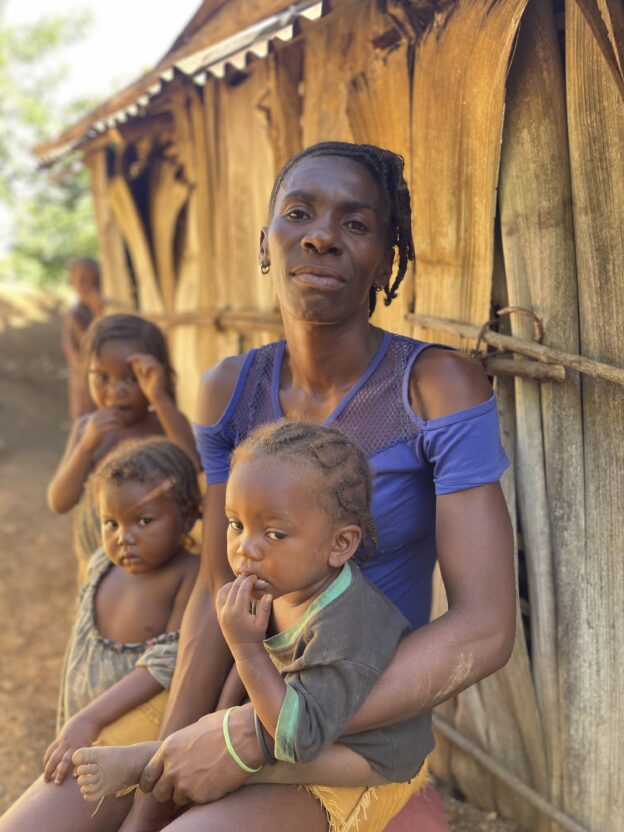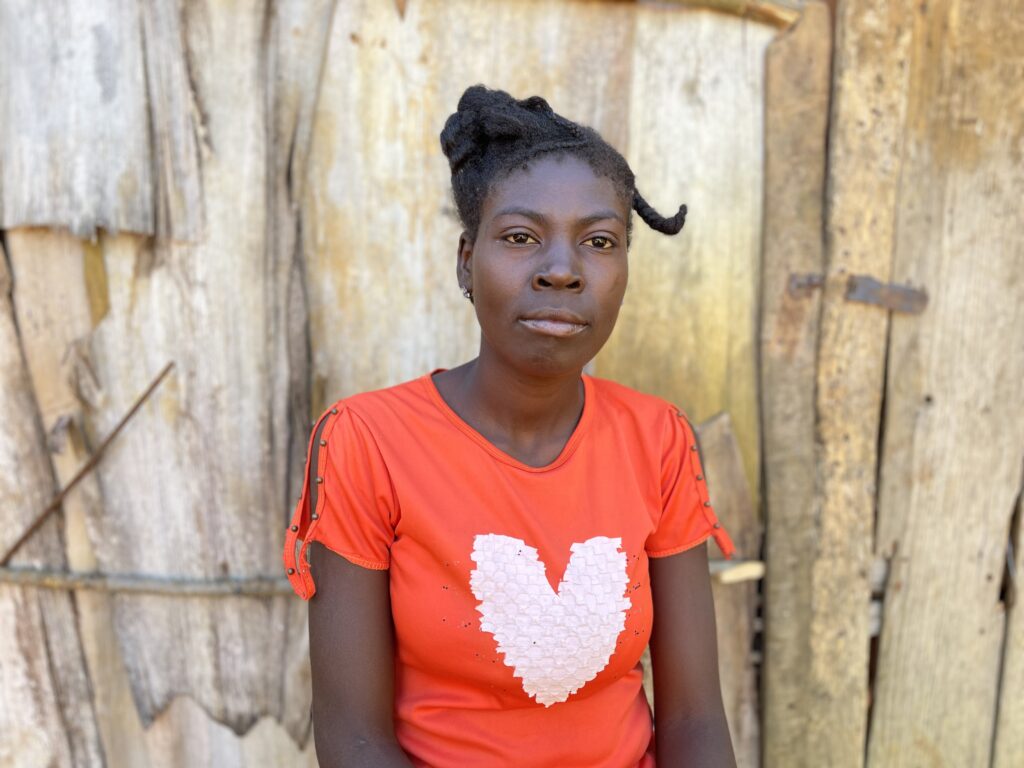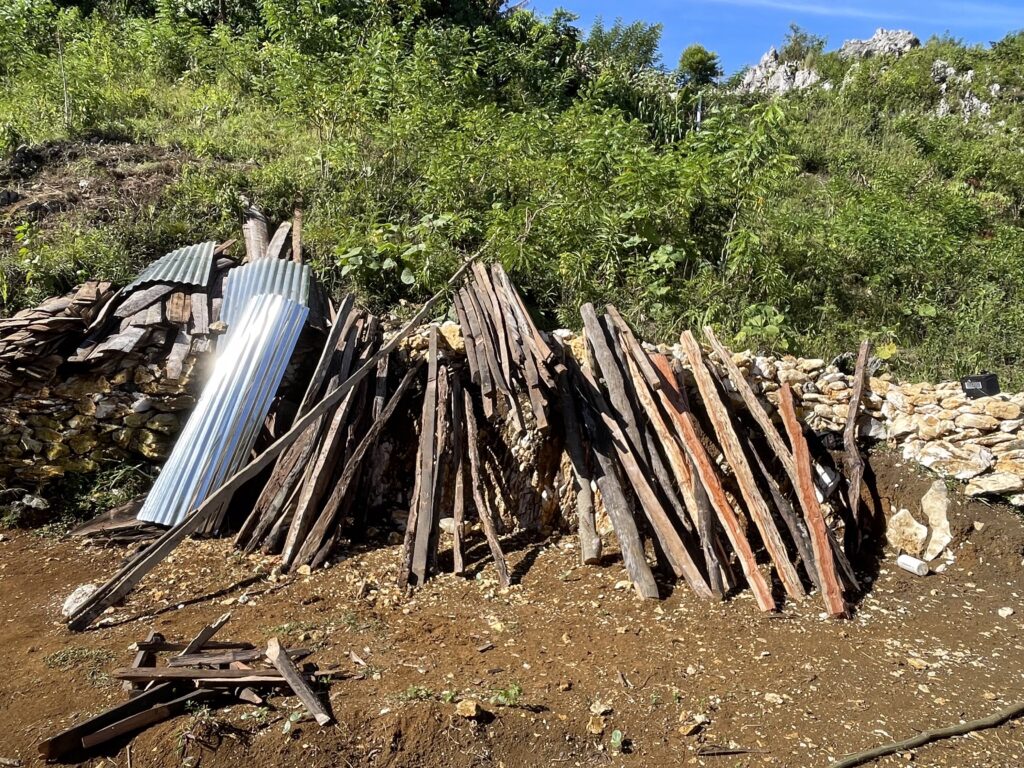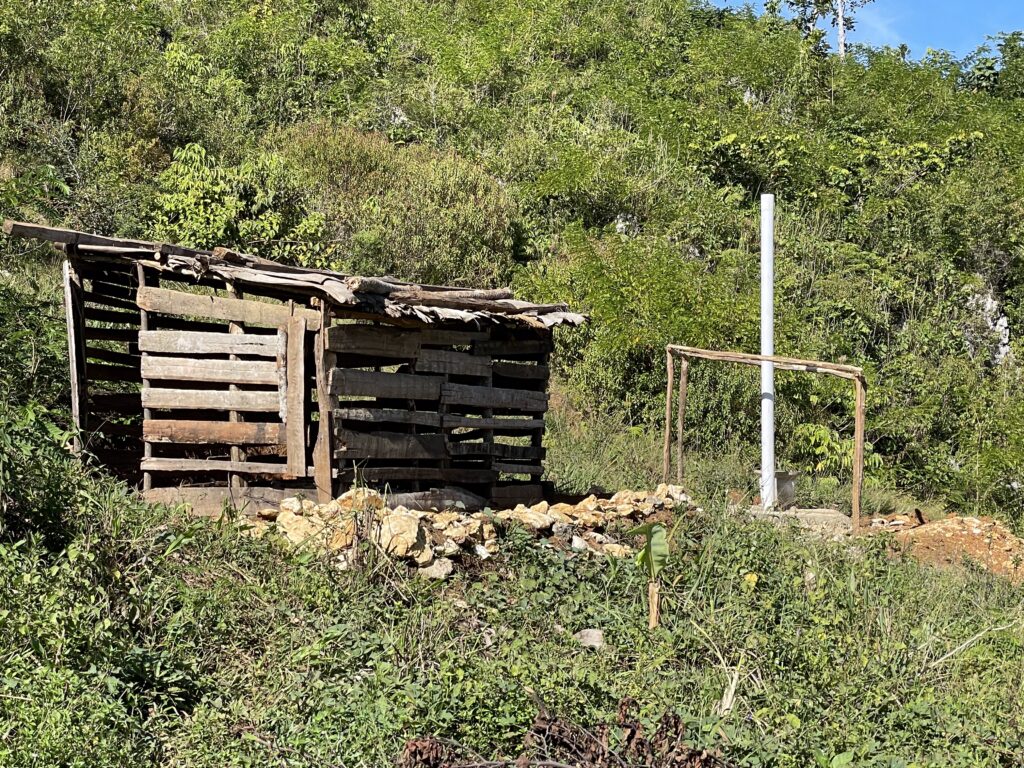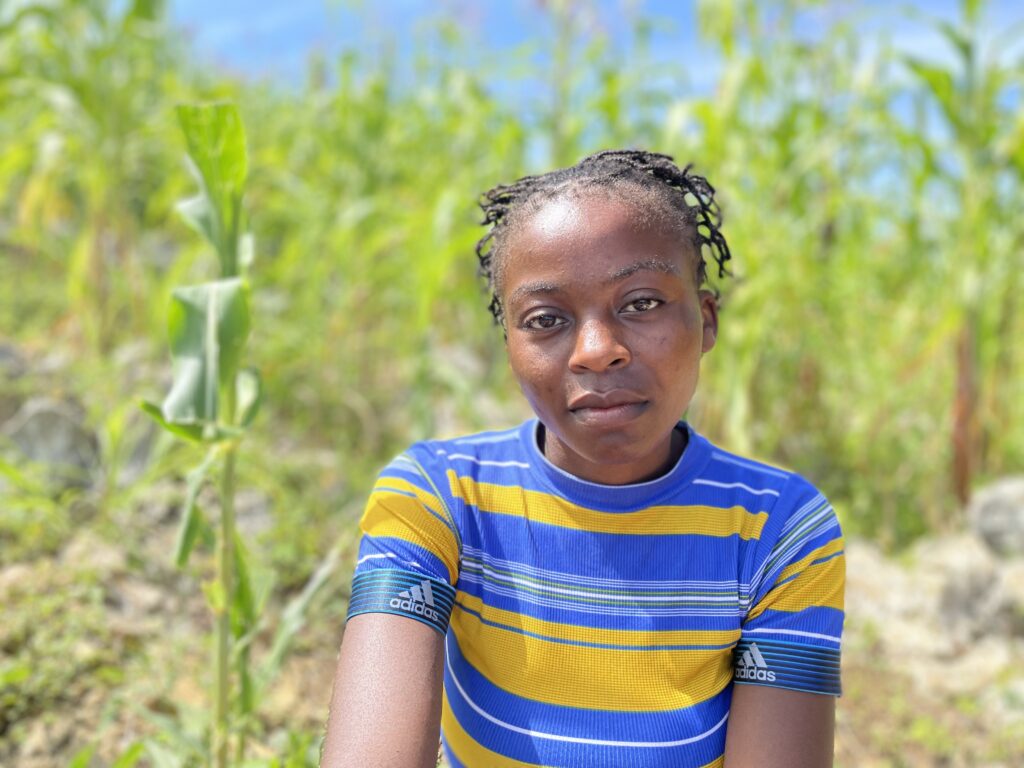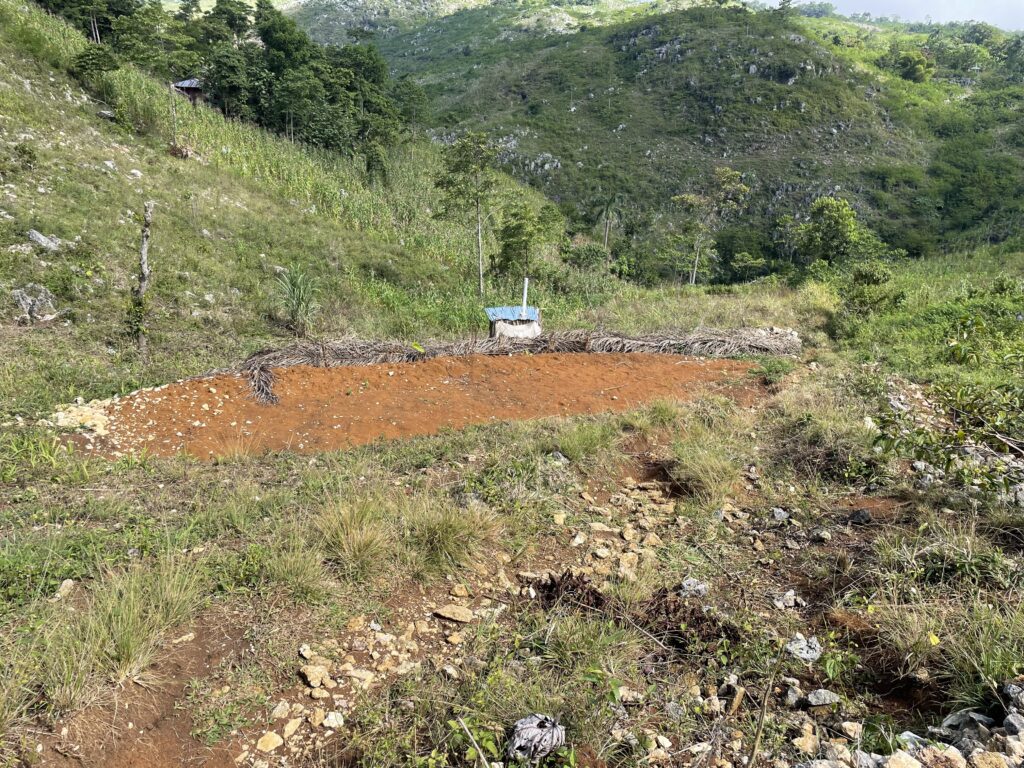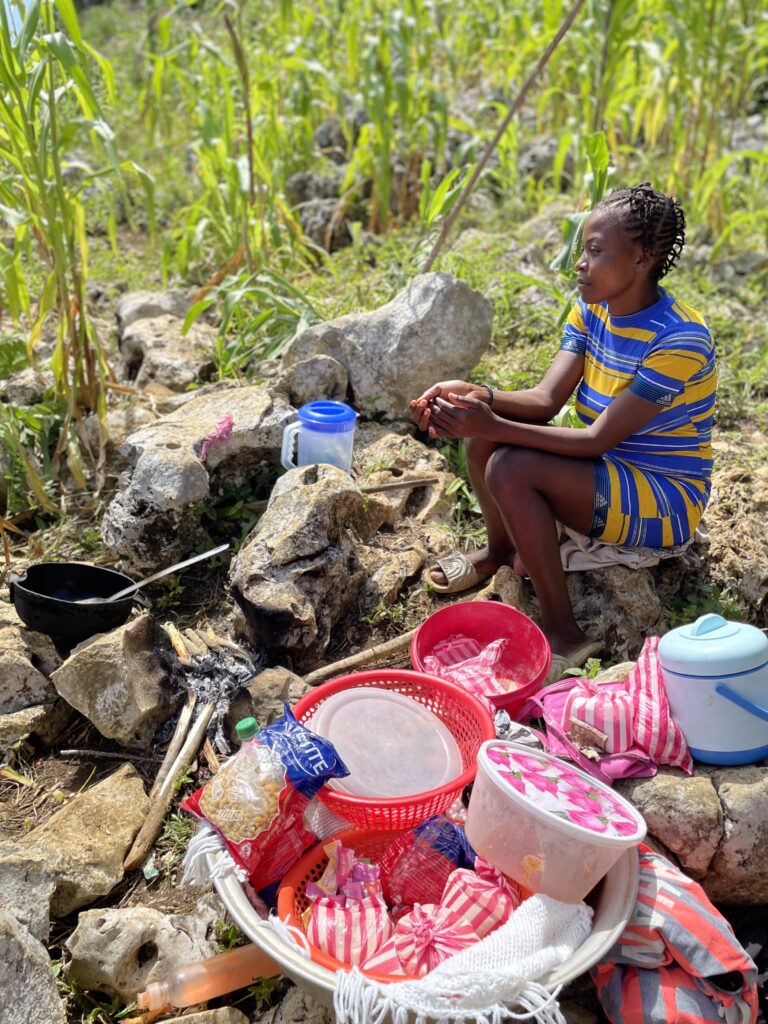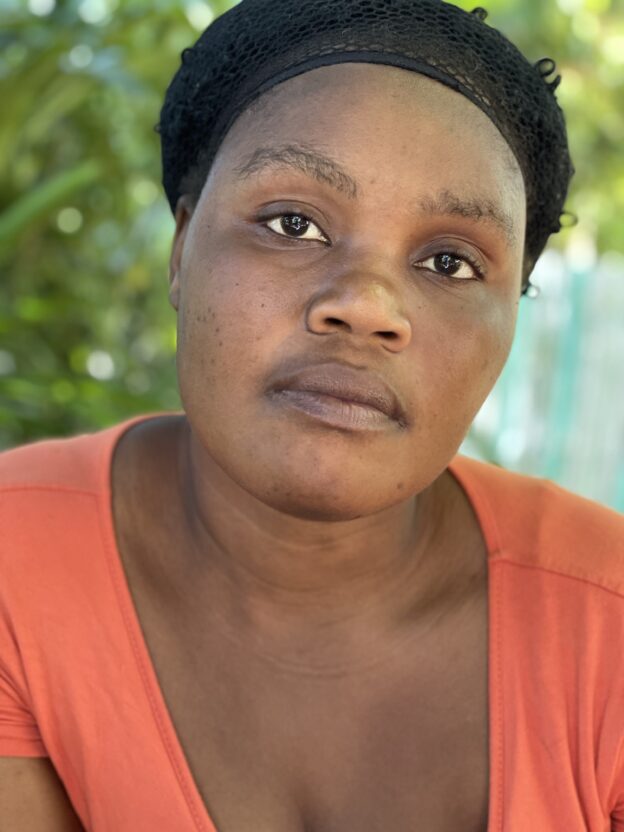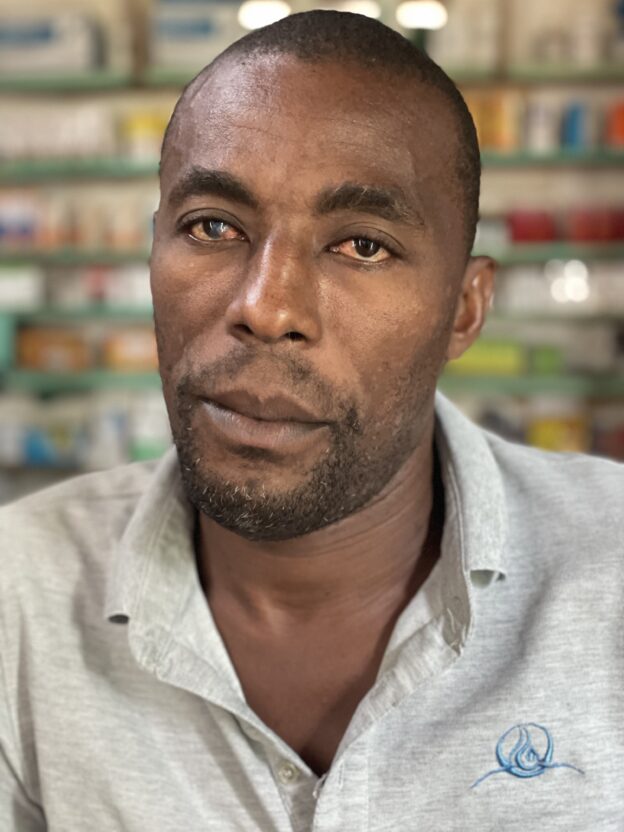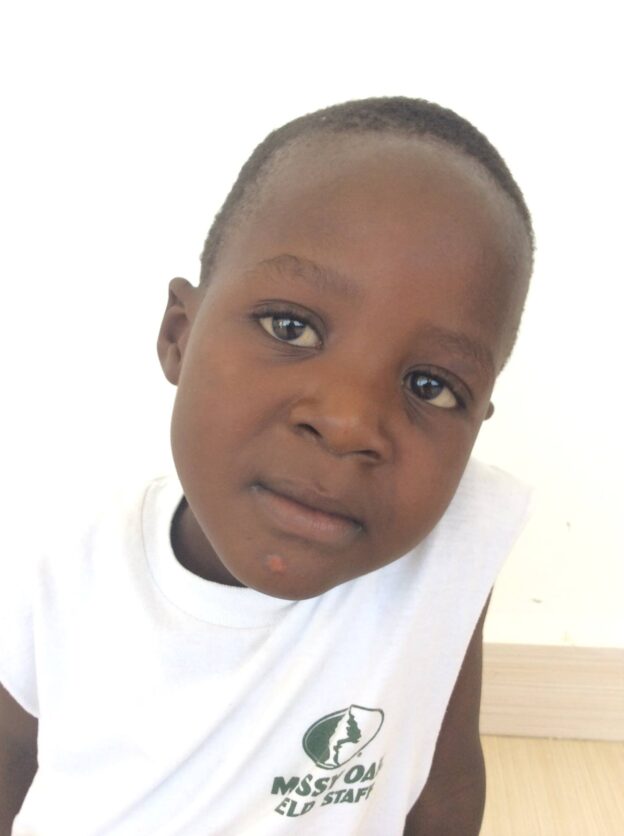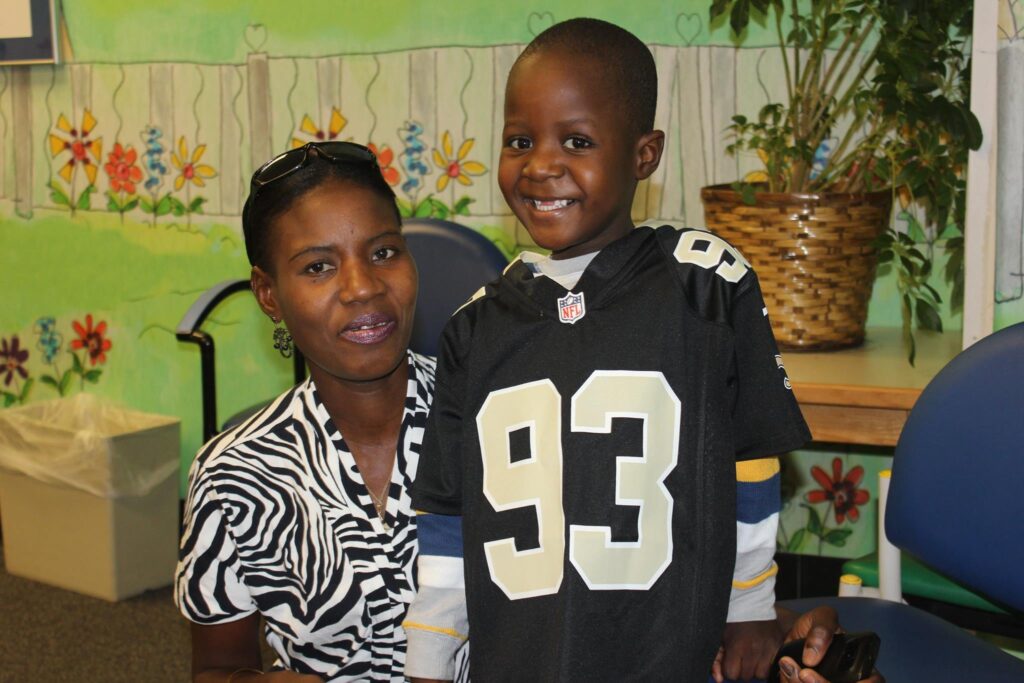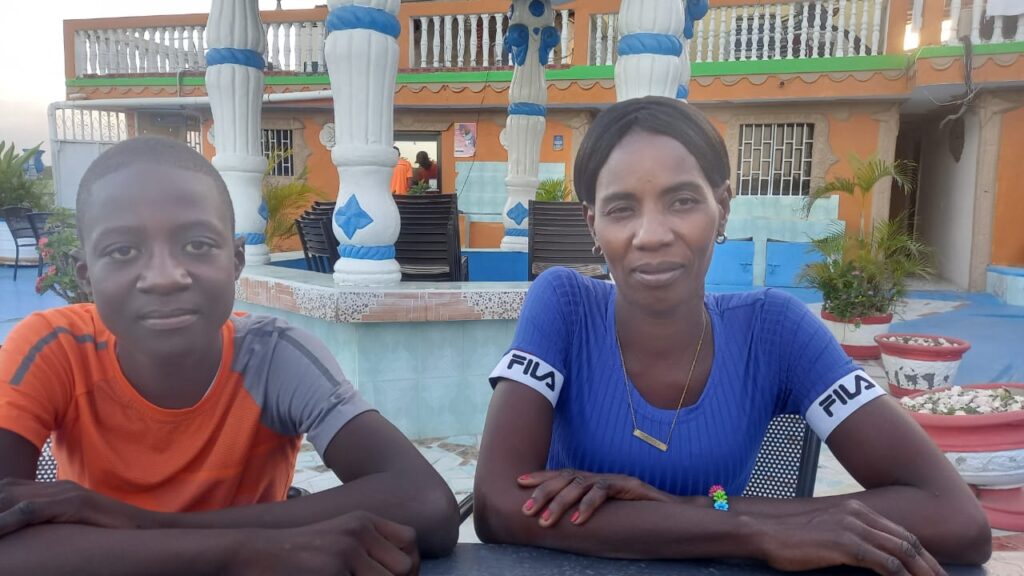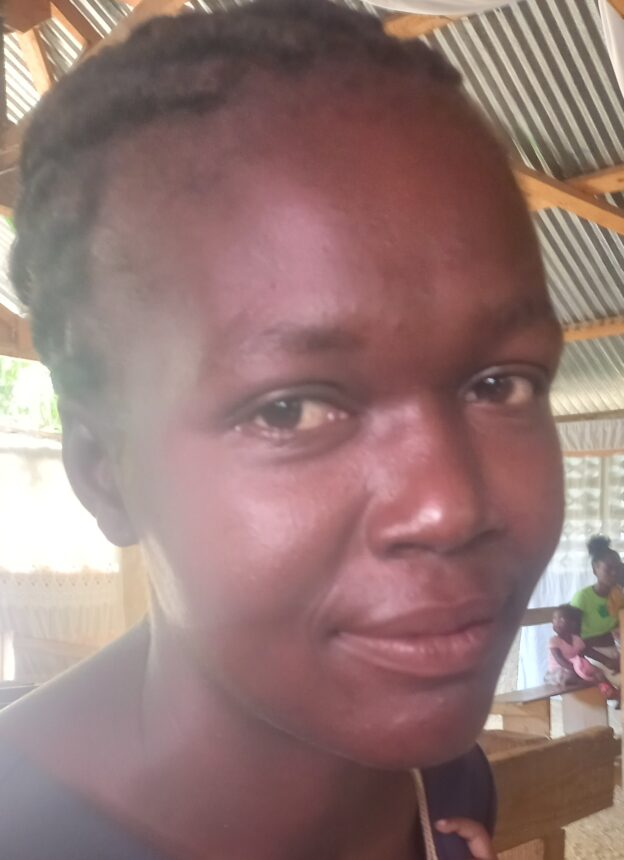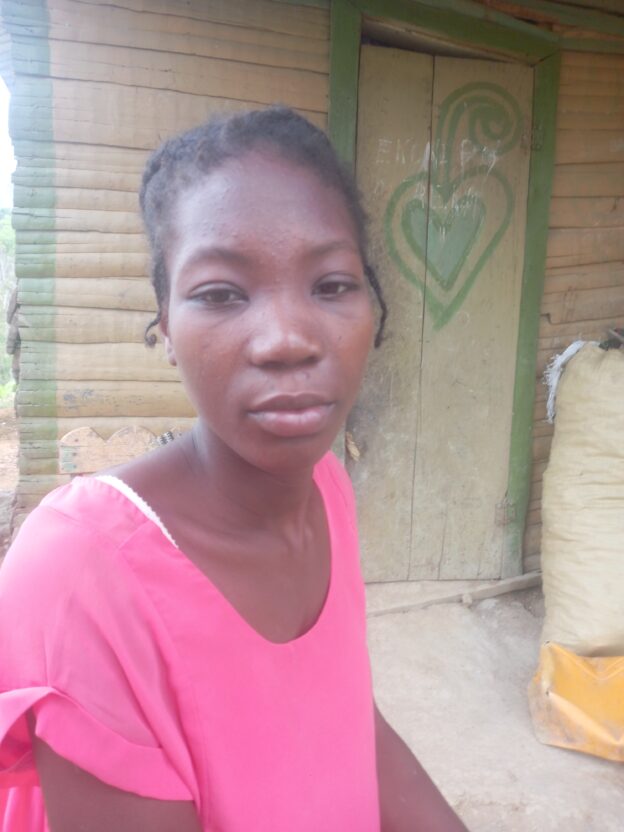Merlande lives in Laryòl, a community in Bonbadopolis, west of the downtown area. She lives there with four of her five children. The fifth lives in Pòtoprens with the father of the two older children and his wife. He provides no support to Merlande and his other child. The other three children are much younger. They have a different father, who lives nearby, but he does not support Merlande either.
She make a living for herself and the children by borrowing money to have bread made at a local bakery. She’d put the bread in a basket that she’d carried around her neighborhood on her head, selling as much as she could. But when she became pregnant with her youngest child, she stopped selling bread. The business was too much work while she had a baby in her arms. That was three and a half years ago, almost 18 months before she joined the CLM program. When she could finally move around a little, she put her hands on about 1,500 gourds, just over $10, and she bought small things — bouillon cubes, garlic, spices like cinnamon and clove — and sold them while hiking around downtown Bonbadopolis.
Then she joined the program, and she got right to work. She used her cash stipend right at the start to get back into the bread business. Now, however, she pays with cash, rather than with credit.
When Fonkoze transferred the first half of the money it would provide for investment, she purchased another kind of small commerce. She bought basic groceries, like rice, flour, sugar, oil, and started to sell them out of her home. That business keeps a steady flow of money — though not very much money — coming in. It enables her to deposit 500 gourds every week into her savings and loan association and another 500 gourds into a savings club she joined with other local merchants.
But she does not like to depend on that business too much, because she’s found that the more expensive merchandise — that is the rice and the sugar that she buys by the sack — moves too slowly. She’s continued with the business, but she’s focusing on the items that move more quickly.
It isn’t the only business she’s tried since she joined the program that has not worked the way she hoped it would. She started selling gasoline, but merchants able to buy at gas stations were getting theirs for less than she was paying, so they sold at a price too low for her.
But she continued to look for another business that would complement her bread business, and she found one that works well. She can buy a sack of cooking charcoal for just 1,000 gourds. She divides it into small bag-fulls. Maybe enough for just a meal or two. After she makes her morning rounds with her bread, she sets herself up by the side of the important dirt road that runs a few yards away from her home. She spends most of her afternoons sitting there, selling her charcoal.
She used some of her investment fund to buy goats, too. Now they are pregnant. She also added earnings from her various businesses to savings from her savings and loan association and her savings club, and she bought a small cow. She hopes that her cow will reproduce and that she’ll be able to sell some of its young to further diversify what she owns. She would like to buy land, but also other livestock.

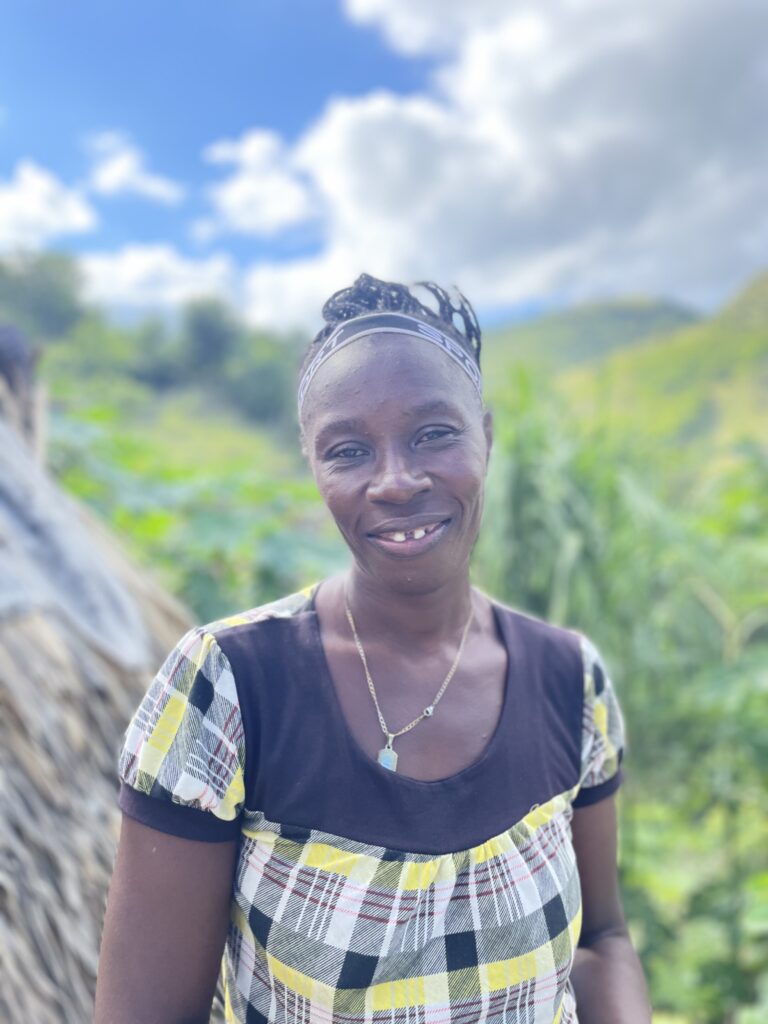
Celise lives, in way, close to Merlande. Her community, Matiren, is just along the next hill. But their corner of Bonbadopilis is so thoroughly riven with ravines, that the series of roads it takes to get from one home to the other seems longer than it is.
She’s only been living in Matiren for about four years. Before that, she lived with her children at her mother’s house in Daniela, on another ridge in the area. She has eight children, with three different men, but she and her mother weren’t getting help from the fathers. The four oldest children moved away, two to Pòtoprens and two to Gonayiv. All four now support themselves. Celise struggles to support the youngest four.
When her mother started to get sick, things just turned worse until an older half-brother offered her a small piece of his land and pushed her to move there. Their father had always wanted to raise Celise, but Celise’s mother had never agreed to it. When the brother saw that Celise’s mother could no longer help her, that things were going badly for Celise, he more-or-less insisted that she join him, and Celise has been in Matiren ever since.”He cares about me.”
When she joined the CLM program, she had nothing, but she knew what she wanted to do. She wanted a grocery business, selling basic food items especially, and she used 15,000 gourds from the program to get started. She bought goats with CLM funds as well, and the number increased, but she tended to sell goats now and then to add to her merchandise, just making she that she could maintain a couple of productive females. She has just two now, though both are pregnant.
Her business grew quickly. From 15,000 gourds it became 68,000. She invested profits back into it in addition to earnings from sales of goats. When her saving and loan association’s 52-week cycle ended, she invested her savings in the business, too. By the time Celise graduated, her livestock and business together were worth 115,000 gourds, or about $900.
Then she ran into problems. A man had moved in with her, and things initially went well. He worked hard to prepare a space for her new CLM-supported home. The plot her brother had given her was steep, so someone had to cut into the slope to create a flat space. The man was willing to do so.
But she soon noticed his reluctance to help with other things. They needed to dig a pit so that Celise could install a latrine, but the man was not willing. What’s worse, she started to notice there’d be merchandise missing out of her business.
Here is where the story gets complicated. One night, she reports, he went out early in the evening and returned after 11, knocking violently at the door without even saying at first that it was him. Celise refused to open it. She still had a lot of merchandise and business capital in the house, not to mention her children, and she felt that she needed to be safe. The argument grew heated once he identified himself, but she refused to open the door, and he eventually went away.
Celise now says that she believes the man has been stealing from her. She reports that she has left the house on errands several times lately, and returned to find some of her merchandise gone. She’s now determined to make their break permanent. They have no children together. But he’s been threatening her, face-to-face and in talking with neighbors, whom he also tells that she will have to take him back. She’ll need to report the threats to the local authorities — it is one way of discouraging him from carrying out the threats — but she hasn’t been able to get herself to do it yet.
In the meantime, she has begun work on rebuilding her business. It is still smaller than it was when she graduated, but it is growing again. She has already earned enough to start buying livestock out of its profits. She now has two turkeys that were not there at graduation. And she continues to take care of her goats, though she now plans to keep them as a source of money to pay for the children’s school rather than as capital for additional investment.
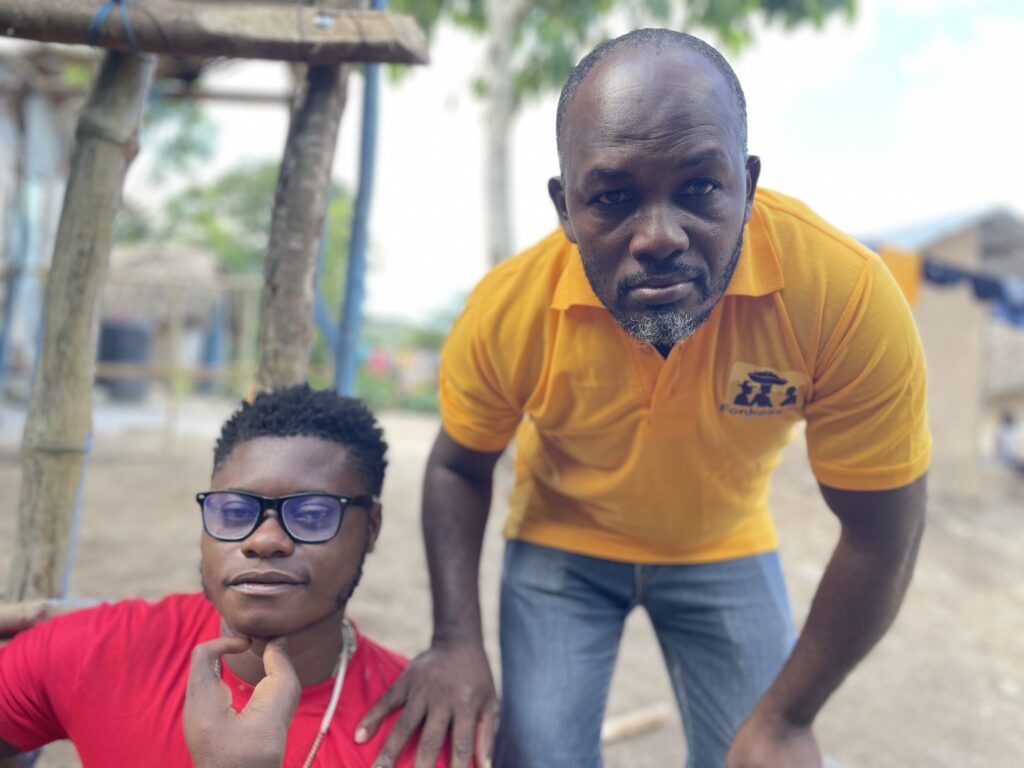
Jean Belson’s experience with the CLM staff stretches back to long before he was part of the program. He was raised, initially, by his grandmother. His mother gave him up shortly after he was born. His father never took any interest in him. Both parents have since passed away.
When his grandmother passed away, he got help from a surprising place. His mother’s previous partner, the father of his older half-siblings, had taken a strong liking to him, and he took him in. “He is my real father,” Jean Belson proclaims.
Even before his grandmother passed away, however, he had been befriended by Docius, or “Cius” as he’s usually known for short. Cius has long been president of a local association with a mission to support people with disabilities. “We have never had money, so no one wanted to be president,” he explains. “We just try to do what we can to integrate them into society.”
Cius met Jean Belson when he was just a boy. Jean Belson reports that he was afraid to be seen at the time. Cius began visiting him often and then taking him to community events. Jean Belson started earning change as an entertainer. He does not have functioning legs, and his hands, though they function perfectly well, are not the shape of most people’s hands. He is athletic, however, and can excite an audience with his dance moves. He didn’t make much, but Jean Belson says, “At least I could buy my own soap.”
He started his life as a merchant shortly after he joined the program. His first investment was small. He used 3,000 gourds that he saved out of his cash stipend to buy a gallon of rum and a couple of packets of cigarettes. He is popular, so friends and neighbors are happy to buy from him.
When he learned that the program would help him buy a home, he spoke with his adoptive father and the man’s two adult daughters. Together they came up with a plan that would be good for everyone. With the roofing metal the program would provide, Jean Belson could cover his father’s house, which until hen had a roof made of straw, then the family would give him one of the home’s rooms as his own. It would keep him with the family and guarantee him his own dry, secure space.
When he received 15,000 gourds as the first transfer of funds for investment, he took his business to another level. He bought groceries that he now sells out of a small shed along a dirt road that passes close to his home. He counts on his popularity to keep his sales up. Often, he’ll have a handful of young people playing dominoes or even just chatting at the door of his business shed. He manages his money carefully, continually reinvesting part of his profit into making the business larger.
With the second transfer he received, he bought goats. Because it is so hard for him to get around, he lets someone else take care of them, and they share any profits. He has a simple goal for his livestock. He hopes they will continue to increase and that he’ll eventually be able to buy a donkey. It will enable him to travel to downtown Bonbadopolis any time he wants without the expense of paying for a motorcycle.
Not everything he has tried has worked out. He thought he had convinced a cousin to buy some merchandise for him wholesale in Gonayiv. Prices there are lower. That’s where the folks he buys from purchase most of what they sell him. But the cousin eventually started hesitating, finally telling Jean Belson that he could not do him the favor because it was creating jealousy.
He belongs to two different savings structures, a savings and loan association like the one that Fonkoze set up for him and his fellow members. He is also in something his calls a “mityèl,” or mutual. It is similar, but has a two-year cycle rather than a one-year one. He has calculated how much he will have at the end if two years if he saves with disciple, and he already has a plan for the money. He wants to buy a solar power set-up and a refrigerator. He thinks that he will be able to make a lot of money by charging people’s phones and selling cold drinks to the many young people who come by to hang out at his shop.
Last week, however, disaster struck. The man he thinks of as his father passed away after a long illness. But even in this difficult moment, Jean Belson is happy about the way his life has changed. He is proud that he’s been able to help with the funeral expenses. “It used to be that no matter what happened, there was nothing I could do. Now I am able to do my part.”
